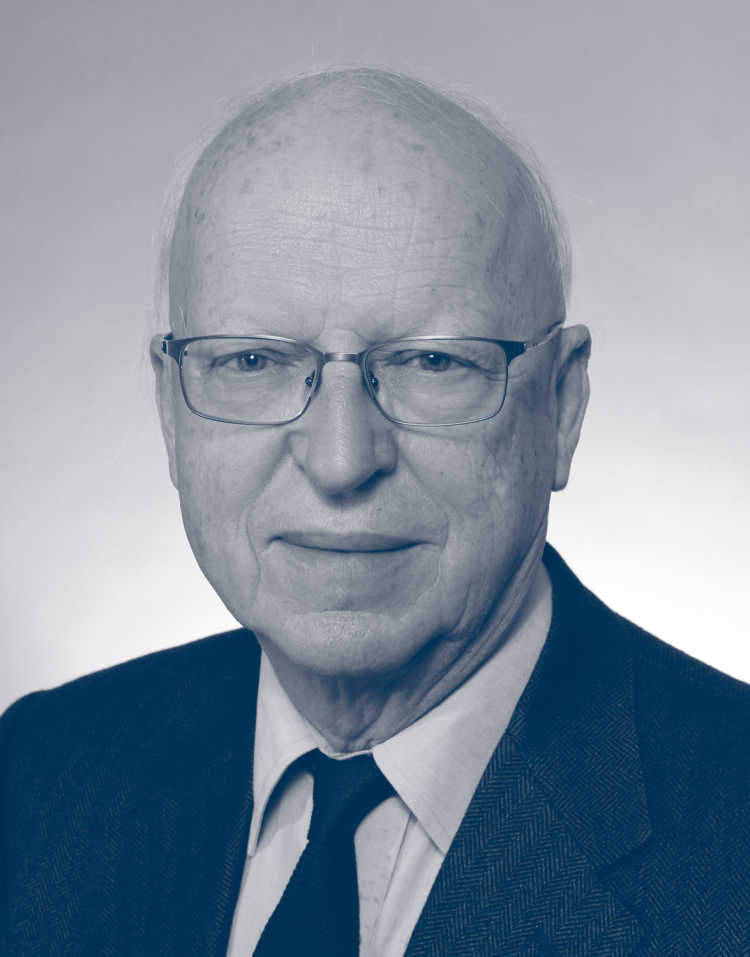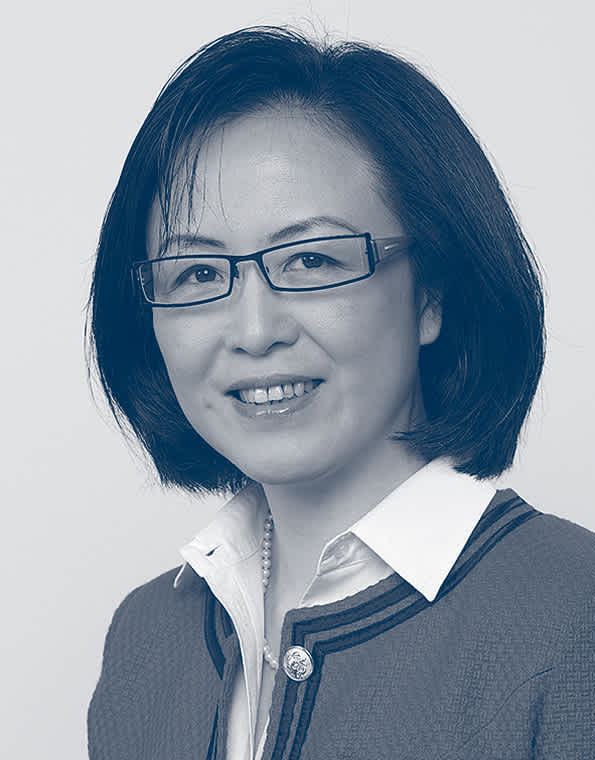- Home
- Publications
- GIGA Focus
- Energy Transition in Japan: From Consensus to Controversy
GIGA Focus Asia
Energy Transition in Japan: From Consensus to Controversy
Number 1 | 2019 | ISSN: 1862-359X

Since the 2011 Fukushima nuclear disaster, energy policy in Japan and Germany appears to have taken radically different directions. In contrast to Germany’s consensus for an Energiewende (“energy transition”), Japan has renewed its political support for nuclear power. Yet, energy transitions in both countries are highly contested – with a much less predictable future than government plans would like us to believe.
Japan has always connected energy self-sufficiency with national security due to its lack of natural resources and its isolated – as well as fragmented – national electricity grid. In contrast, Germany has a single grid, can trade electricity with its neighbours, and has large coal reserves.
In Japan, nuclear power became a quasi “home-grown” energy source without strong opposition, while in Germany it has been increasingly contested by the “coal lobby,” wind power, and the public.
When the Fukushima disaster happened, both countries generated about 30 per cent of their electricity from nuclear power plants. Both countries had ambitious renewable targets already beforehand. Today, renewables account for 38 per cent of electricity production in Germany and 15.6 per cent in Japan.
In both countries, the Fukushima disaster caused the collapse of the “safety myth” of nuclear power plants. In Germany, the long history of contestation over a nuclear phase-out and the broad public anti-nuclear consensus made a return to nuclear impossible. In Japan, anti-nuclear protests accelerated only after the Fukushima disaster. Thus with Prime Minister Abe’s pledge to put the economy back on track, Japan is taking the political risk of reactor restarts.
Policy Implications
Energy transition is as much a reality in Japan as it is in Germany. Renewable energies have been evolving even more rapidly in Japan than in Germany in recent years, a trend further fuelled by current dynamics in the energy sector. Old regimes of energy policies are obsolete, and it is time to replace outdated analytical models with more dynamic ones to interpret national energy transitions and to pave the way for informed policymaking.
Japan’s Energy Transition at a Turning Point
Since the nuclear disaster in Fukushima of 2011, the simplified yet widespread story has been that because the German government made the subsequent decision to phase out nuclear power and pursue “energy transition” (or Energiewende) renewable energies have received a strong push. In contrast, scholars describe Japanese policymakers as manipulated by the nuclear lobby – thus hindering an energy transition and expansion of renewables in Japan.
This article takes a more long-term view on energy transition, and demonstrates that large shifts in energy supply – whether in Germany or Japan – depend on a complex set of political, economic, and technological factors that cannot easily be predicted. Further, nuclear power and national energy transitions are very emotionally charged issues and as such are highly contested, with an ever-increasing number of actors – from politics, industry, and civil society – involved. This results in a future that is much less predictable than government plans would like us to believe. Despite strong attempts by the Japanese government and the nuclear industry to revive nuclear power, there are clear signs that the country has reached a turning point towards an energy transition with accelerating shares of renewable energies.
Energy Policies in Germany and Japan before Fukushima
From the 1960s to 1980s, Germany and Japan followed a similar energy policy of “competitive accelerated adjustment” (Cherp et al. 2016: 5) to balance their energy demands with secure supply: their rapid industrialisation, increasing energy demands, and the oil shocks of the 1970s provided the impetus to expand their nuclear power, restructure industries, and to promote efficiency. Differences between Germany and Japan emerged in the early 1990s, when the electricity demand of the former stagnated while it continued to grow in the latter. For Japan, which lacks natural resources to generate electricity (imports supply about 60–80 per cent thereof) and is spatially isolated from neighbouring countries, nuclear power was an opportune political answer to ensuring energy security. Moreover, Japan was developing “energy angst” (Calder 2008) related not only to its high dependence on Middle Eastern oil and gas, but also to growing concerns with Asian energy markets as competitors – in part due to China’s switch in 1993 from being an oil exporter to the world’s largest oil importer (Cherp et al. 2016: 5).
In Germany, 75–90 per cent of electricity was generated using domestic resources during the same period – especially its highly subsidised large coal reserves. In addition, wind power technology diffused to Germany from neighbouring Denmark. This was triggered by an electricity feed-in law entering into force in 1990, which obliged German electric utilities to buy from small producers at close-to-retail prices. The law, which had aimed to benefit a small number of micro-hydro plant owners, unexpectedly led to almost a 100-fold rise in wind installations in Germany. While at the time still insignificant in terms of electricity, a large and vocal lobby of wind turbine owners and manufacturers developed. In fact, the wind sector provided less than one-tenth of nuclear electricity – but nonetheless offered more jobs than it. By contrast, Japan did not see any considerable growth in wind power until very recently (Cherp et al. 2016).
Rather, for Japan, nuclear power became a quasi “home-grown” energy source which the Japanese government sold as the only plausible response to its energy angst. Key players of the so-called nuclear village, a network of government and private sector actors prioritising the development of nuclear power to maintain energy security, provided institutional financial support for host communities and developed public relations campaigns and educational programmes to promote nuclear energy (Feldhoff 2014). The public was reassured that nuclear power plants were absolutely harmless. In Germany, nuclear power had been accompanied by widespread social protest and activism, starting in the mid-1970s – although the anti-nuclear movement lost momentum in the early 1980s. The Chernobyl disaster in 1986, which shattered the industry’s long-cherished “safety myth,” revived the nuclear debate in Germany. Although the government remained committed to nuclear power and its output peaked in the 1990s (contributing 29 per cent of electricity supply, while in Japan it reached 27 per cent), it appealed for a combined international effort to increase safety standards. These new requirements increased the cost of nuclear energy and, thus, impacted the industry’s plans for expansion. As an example: Siemens, which was involved in the construction of all German nuclear reactors, sold its reactor business to the French company Framatome in 2001, and in 2011 announced the end of its nuclear activities (Cherp et al. 2016: 7).
Phasing out nuclear power became a core project for Germany’s first Social Democratic Party and Green Party coalition government. The so-called Atomkonsens (“nuclear consensus”) contract – a phase-out agreement with the major electric utilities – was signed in June 2000. However, a new government in 2009 approved an extended phase-out period in order to allow for nuclear electricity generation as a bridging technology on the way to decarbonisation of the country’s energy system. The decision was highly controversial at the time, and it was quickly reversed after Fukushima. In contrast, Japan built 15 new reactors in the 1990s and five after 2000 (by 2011, it had 54 in total). In addition to large and stable research and development funding, the Japanese government overpowered local resistance to nuclear power by increasing monetary support for the host communities of nuclear power plants (Feldhoff 2014), thus preventing the development of a powerful nationwide anti-nuclear movement. Although several reactor accidents occurred during the 1990s and public opposition to nuclear power plants grew, it was only after Fukushima that Japan saw anti-nuclear protests on a hitherto unimaginable scale.
While phasing out nuclear power, Germany expanded wind and solar. Both Germany and Japan have promoted solar photovoltaic (PV) power technology since the 1970s. Japan expanded its role with the Alternative Energy Act (1980), which supported solar and other “alternative” energy sources through financial, technical, and regulatory measures. It was Japan rather than Germany that first became the global solar PV leader. During the 1990s, the use of solar PV power was still at a low level, but increased in both countries – with Japan installing six to seven times larger capacity than Germany (Cherp et al. 2016: 10). In the 2000s, Japan was named the world leader in solar PV; impressive advances in photovoltaics were ignored, though, because the nuclear village used their political influence to favour nuclear power. In Germany, the Renewable Energy Source Act (Energieeinspeisegesetz, EEG) of 2000 changed the situation by providing very high feed-in tariffs for solar power. Thereafter, Germany overtook Japan in both the installation and manufacturing of solar PV panels.
In 2010, both Japan and Germany adopted comprehensive and somewhat similar energy plans for the next two decades. In Germany, the Energiekonzept (“energy concept”) aimed to reduce the use of coal by 2.7 times, increase non-hydro renewables by 2.4 times, and triple solar PV output by 2030. In Japan, the third Basic Energy Plan (BEP) proposed to reduce the use of fossils by 2.5 times, almost triple non-hydro renewables, and planned for an estimated 15–20 times increase in solar power by 2030 (Duffield and Woodall 2011). In order to reduce the use of coal, both plans also envisioned a larger role for nuclear power: The German Energiekonzept proposed an extension of the lifetime of nuclear power plants, and in Japan the BEP proposed to double nuclear power output (to cover over 40 per cent of energy requirements by 2020, and 53 per cent by 2030) – by constructing 14 new reactors in addition to the existing 54. Japan was at that time the world’s third-largest producer of nuclear power after France and the United States (Cherp et al. 2016). The rationales cited in both Germany’s and Japan’s energy plans were energy security, environmental sustainability (both issued ambitious greenhouse gas emission reduction targets), and economic efficiency. The BEP 2010 named these “3Es” as the rationale for why “the government itself will continue taking the lead in the further development of nuclear energy” (Cherp et al. 2016: 9; METI 2010).
Post-Fukushima Energy Policies in Germany and Japan
Although the energy paths of Germany and Japan had differed since the 1990s, when the Fukushima nuclear accident happened on 3 March 2011 both were generating about 30 per cent of their electricity from nuclear power plants (Feldhoff 2014). After the accident, this percentage dropped precipitously in both countries. Japan shut down all of its nuclear power plants temporarily or permanently. Since then it has been coping with capacity loss through drastic reductions in electricity consumption, and by burning more gas, oil, and coal in conventional thermal power plants. About half of the generating capacity lost after Fukushima was compensated for by voluntary reductions driven by the setsuden (“energy-saving”) movement (Feldhoff 2014), which is still strong today. Japan currently ranks as the world’s largest importer of liquified natural gas and second-largest of coal, behind China. Germany compensated for its own capacity loss after Fukushima with domestic coal and renewables. Both countries have managed to maintain a secure energy supply at reasonable prices with far less nuclear power than before Fukushima, but their high fossil fuel consumption has caused rising CO2 emissions – invoking national and international criticism. Japan’s plans to construct new coal-fired power plants further fuels national and international protests.
For Germany, Fukushima has put an entirely new relevance on the term “residual risk,” demonstrating the “genuine threat” of nuclear power plants. Thus it returned to the phase-out timeline previously agreed in the Atomkonsens, and accelerated its energy transition. Within six months of Fukushima, eight of Germany’s 17 nuclear reactors had been shut down permanently and new regulations to phase out nuclear energy by 2022 come into effect. Given the highly contested history of nuclear phase-out and the broad public antinuclear consensus in Germany, a return to nuclear energy is not a viable political option today. In the direct aftermath of Fukushima, Germany’s future targets for renawables were moderate; in January 2018, however, the German government agreed to establish a target share of 65 per cent for renewables in 2030. Domestic energy resources (e.g. coal, with which Germany still covers about 40 per cent of its primary energy consumption) offered an immediate option to fill the energy gap caused by this shutting down of nuclear power plants. Moreover, Germany’s integration in an emerging European (renewable) energy market – which can provide back-up power if necessary – as well as policy instruments to support renewable capacity expansion already being in place (e.g. the EEG) substantially reduced the uncertainties of Germany’s response to Fukushima.
For Japan, the situation was different; so were the responses. The government fundamentally revised its nuclear safety measures after Fukushima (3Es + “S” for “safety”), and in 2012 the Nuclear Regulatory Authority (NRA) was established to inspect nuclear reactors under new safety regulations. Public opposition to nuclear power generation quickly strengthened and, in response to a growing distrust in the political elites and bureaucracy, interest in citizen science has grown in Japan (as well as elsewhere). One prominent example is the online platform Safecast (https://safecast.jp), developed by Japanese citizens for measuring, collecting, and publishing data on radiation exposure independent of official statements. In view of fake news, alternative facts, and the co-option of academic experts by policymakers, citizen science has been portrayed as a “(re)vitalization of Japanese democracy” (Feldhoff 2018: 13).
Against this background, in mid-2012, the Democratic Party of Japan (DPJ) administration published a policy of zero nuclear power by the 2030s. Moreover, in the face of strong opposition by the utility firms that had had their nuclear power plants shut down after Fukushima, the Japanese government introduced a new feed-in tariff system in July 2012 (for details, see Kimura 2017). In other countries, especially in Europe, such systems had been successfully used to foster renewable energy investment by major utilities and start-up firms, driving technological innovation and leading to lower costs for consumers. In Japan, the percentage of renewable energy jumped from about 9 per cent nationwide in 2011 to 15 per cent in 2016. The government has not defined specific expansion targets for individual renewable energy resources, but PV systems account for the majority of new installations. In June 2016, the Abe government reformed the scheme to make renewable power generation more difficult and less lucrative. Nevertheless, the basic principles remain in place.
After the Liberal Democratic Party (LDP) regained power in September 2012, it started to drew up a mid-term energy policy in the fourth BEP (published April 2014) – the first to be formulated after the Fukushima disaster. Here, nuclear power is again positioned as a significant “base load power source” (METI 2014: 10). This might have come as no surprise to anyone familiar with the still-powerful nuclear village in Japan. With rising energy imports and electricity prices, a widening trade deficit, and Prime Minister Abe’s pledge to put the economy back on track, Japan is taking the political risk of reactor restarts and claiming that the effects of the Fukushima disaster are controllable. Again, Japan’s energy angst and economic issues are strong guiding principles to justify government policy. Japan’s competition with neighbouring countries for access to energy resources has increased, and regional collaboration with regard to energy security is difficult given the burdens of history in the country’s international relations.
Regarding renewable energy, the 2014 BEP states that by promoting energy efficiency and conservation, accelerating the introduction of renewable energy and optimizing coal power generation and other forms of thermal power generation, dependence on nuclear power would be reduced to the maximum extent possible (METI 2014). However the BEP sets the target value for nuclear power (20–22 per cent) at almost the same level as for renewable energy (22–24 per cent), a target almost unchanged from the 2010 BEP. Japan’s fifth BEP (published July 2018) reasserted the above figures for Japan’s energy mix in 2030, and additionally addressed long-term options until the year 2050. Renewables should be turned into “mainstay” power sources that are self-reliant in economic terms (METI 2018: 46). Scholars take this statement as a committment of the Japanese government to fostering renewables. At the same time, the plan has been highly criticised for not making an upward revision in the share of renewables in the overall energy mix envisaged for 2030. As the share of renewables has already grown to more than 15 per cent in Japan, there is a high possibility that the numerical goal will be achieved well ahead of the initially planned year date.
Perspectives on Japan’s Energy Transition: From Consensus to Controversy
The current government wants nuclear reactors to be reactivated as soon as possible. However this depends on a number of external factors. These include economic considerations, including utility firms’ cost–benefit analyses on the implications of restart or shutdown, the impact of electricity deregulation and intensified market competition, local political and public opposition, Japan’s ability to renew and export its technology, as well as decisions taken by other important nuclear-producing countries.
Sceptics say that the Japanese government’s nuclear target of 20–22 per cent for 2030 is unrealistic, given the current status of nuclear power production, long delays to restarts, and the demanding and expensive clean-up operation at Fukushima. In 2017, nuclear power production in Japan contributed only 2.8 per cent of annual electric energy output. With nine reactors operating in 2018, nuclear’s share will reach 6.5 per cent. In order to achieve the target of 20–22 per cent by 2030, it would be necessary to operate approximately 30 nuclear power plants (Kucharski and Unesaki 2018). The 54 reactors operating before Fukushima have been reduced to 39, with the loss of six units at Fukushima Daiichi and nine other older ones having commenced decommissioning already. Of these 39, the NRA has received restart applications for 26. Under the stringent new nuclear safety standards, 14 nuclear power plants have passed review since Fukushima (of which, the above-mentioned nine have successfully resumed operations) while 12 are still in the review process; it is uncertain how long this will take. Thus, to achieve the government’s goal, either new reactors have to be constructed and/or some of the existing one must have their licences extended beyond the statutory 40-year term – which, according to regulations, is indeed possible in exceptional cases. In fact, in October 2016, three reactors were approved by the NRA to operate beyond this time limit, for an additional 20 years (Cherp et al. 2016). Estimates show that it will cost more than EUR 8 billion to build a new nuclear plant or expand an existing one to meet the updated safety standards. It is questionable whether power companies can afford these costs – even with government support.
Moreover, reaffirming high targets for nuclear power could still trigger a backlash – although the anti-nuclear movement in Japan may have lost momentum over the years. Nevertheless, according to a recent media survey, more than 80 per cent of respondents said that they remain concerned about the risk of a severe accident, and more than 60 per cent called for phasing out nuclear energy in the future (JT 2018). Anti-nuclear protests continue to some extent; one well-known example is the Federation for the Promotion of Zero-Nuclear Power and Renewable Energy (genjiren, officially established in May 2017, www.genjiren.com) that continues its anti-nuclear campaign throughout Japan with prominent support: former prime minister Jun’ichiro Koizumi is its advisor.
Despite the persisting pro-nuclear policy of the Japanese government, in reality the energy sector will only continue to evolve. Following the introduction of the feed-in tariff system in 2012, the establishment of new regulatory institutions (e.g. the NRA), and the liberalisation of electricity retailing which began in April 2016, the “rules of the energy game” have changed, resulting in a more dynamic process of interaction and decision-making among a broader range of energy-related institutions than in the past (Kucharski and Unesaki 2018; GJETC 2017). New entrants into Japan’s supply market have emerged; the renewable energy business sector continues to expand, innovate, and attract new players. Thus, Japan’s traditional energy sector is being challenged. More than 400 new retail companies had been licensed by September 2017. The number of consumers switching from the 10-major electric power companies to other retail companies had reached almost 3.8 million (about 6 per cent of all customers) by 30 June 2017. Also, the bigger customers are switching between regional Japanese power companies. As various websites that compare electricity prices are launched, attention is focused on keeping them as low as possible. The sales share of the new licensed retail companies (excluding the 10-major electric power companies) had reached about 11.4 per cent of total electric power demand, and their share had increased to over 20 per cent in the areas of Tokyo, Kansai, and Hokkaido, by June 2017 (Kucharski and Unesaki 2018).
Moreover, after Fukushima, Japan’s population started to undertake initiatives to work on community-based renewable energy planning and development. The Ministry of Environment in 2011 set up a support programme for communities to start up renewable energy projects. These community power plans flourished after the feed-in tariff was introduced. By the end of 2016, nearly 200 community power enterprises had emerged. According to data from the Institute for Sustainabe Energy Policies (ISEP), a total of 50 municipalities in Japan were estimated to be fully self-sufficient on the basis of renewable energy and even able to sell surpluses to the grid (ISEP et al. 2017). The nationwide spread of the German Stadtwerke (“municipal utilities”) model since Fukushima is further spurring these developments.
To sum up, Japan’s energy system has already moved from a highly centralised to a more decentralised system, relying increasingly on renewable energy sources. With this, Japan is following a universal trend of decentralisation: “The pathways of countries differ, but the trend to decentralization is universal” (Hennicke 2018: 23). Recent natural disasters like the 6.7 magnitude earthquake on 6 September 2018 in northern Japan, causing an electricity knock-out of the entire island of Hokkaido (the size of Austria), further accelerate the development of decentralised electricity supply structures relying on renewables – with the side effect of supporting Japan’s regional revitalisation plans, too.
Japan’s nuclear industry is also undergoing rapid change, and its three industrial icons Toshiba, Hitachi, and Mitsubishi Heavy Industries (MHI) – who are all also active in nuclear reactor design and engineering – are struggling. Despite a continuing interest in exporting nuclear reactor technology, the international market for that is limited and subject to fierce competition from China, Russia, and South Korea. Attempts to get Japanese companies to act collaboratively in the Vietnamese market floundered when the government of the latter decided to pull out of a USD 11 billion deal in November 2016 due to safety fears (Incerti and Lipscy 2018: 621). Toshiba almost went bankrupt following revelations of large losses in its nuclear division, Westinghouse Electric, forcing the company to sell off some of its highly successful semiconductor business. In February 2018, Toshiba sold the Westinghouse business to a US private equity firm, offloading it for USD 1 billion less than it had itself paid 10 years earlier. At the beginning of December 2018, the national media reported that a Japan-led public–private consortium, overseen by MHI, was set to abandon a Turkish nuclear power project as cost estimates had nearly doubled. The original USD 22 billion export deal for the construction of Turkey’s second nuclear reactor was agreed upon by the Japanese and Turkish government in 2013. Hitachi’s nuclear power plant projects in the United Kingdom – for which the company has already spent USD 3 billion – faces difficulties to proceed, also because the UK government is currently very much focused on the challenges of Brexit.
Energy Transition in Japan as Much a Reality as in Germany
Japanese government rhetoric notwithstanding, fundamental economic changes, declining investments in nuclear technology from the private sector, and intense civil society opposition will make a full-blown return to nuclear power difficult – eventually paving the way for a strong growth in renewables. Despite the influence of Japan’s nuclear lobby, the country’s transition away from nuclear – and eventually also fossil fuel – energy sources and towards renewables is well on its way. In reality, renewables have been evolving more rapidly in Japan in recent years than in Germany – even though the former’s share of renewables still remains more modest than the latter’s. This trend will be further fuelled by an increased push for decentralisation, as Fukushima not only questioned the safety myth of nuclear power but also the traditional centralised electricity system itself. While the final outcome of Japan’s energy transition remains to be seen, it is clear that the balance of power shaping the country’s energy future has, by now, fundamentally and irreversibly shifted.
While in Japan the nuclear village still plays a major role in formulating energy policy, other actors have also emerged – and a more complex dynamic shaping the country’s energy system is now at play. At the same time, the shift to greater reliance on competitive markets implies less predictability and more ambiguity around reaching the goals of the latest strategic energy plans. What is clear from the German case is that guaranteed feed-in tariffs and regulatory changes that foster increased regional competition can have market consequences that go well beyond the imagination of government planners. In a similar way as the “nuclear village” in Japan, the coal lobby in Germany is still strong and thus hindering the spread of alternative energies, with differnt dynamics at play. Thus, it is also time to replace outdated analytical models, through which to interpret change, with more dynamic ones that better take economic and technological changes into account. Moreover, given the fact that nuclear power and national energy transitions are very emotionally charged issues, a diverse and independent research community is a precondition for informed decision-making. The German-Japanese Energy Transition Council (GJETC), whose first meeting took place in September 2016, is one example of facilitating the scientific exchange of experiences in energy transition, and mutual learning.
For Japan, a return to nuclear energy as a major source of electricity will remain challenging and contested – even despite looking back to only a recent history of controversy regarding nuclear power. In any case the uncertainty around nuclear energy in Japan will remain high, for numerous reasons. Not only will any major seismic event immediately derail plans to put existing plants into production, let alone plans to build new ones, what is perhaps more important is that the uncertainty over nuclear technology makes it more and more difficult for companies to justify their investments in it. As a consequence, overall investment in nuclear energy and technology is likely to decline. This is partly also a generational problem. Technical experts hired by heavy engineering companies during the heyday of nuclear power expansion are increasingly reaching retirement age, and recruiting new talent will become ever-more difficult. Further, public opposition to nuclear power is unlikely to diminish any time soon either.
For policymakers in Germany and Europe, the looming changes in Japan’s energy regime carry a number of implications. As nuclear energy in Japan turns more into a “sunset technology,” the country’s market for nuclear technology may well decline. By contrast, investments in renewable energy sources are likely to increase – and may do so even without significant political support. For European companies this could create interesting opportunities to export technology and expertise, while providing (again) more common ground for policymakers especially in Germany and Japan in such areas as climate change or investment in renewables technology.
Footnotes
References
Calder, Kent (2008), Japan’s Energy Angst: Asia’s Changing Energy Prospects and the View from Tokyo, in: Strategic Analysis, 32, 1, 123–129.
Cherp, Aleh, Vadim Vinichenko, Jessica Jewell, Masahiro Suzuki, and Miklos Antal (2016), Comparing Electricity Transitions: A Historical Analysis of Nuclear, Wind and Solar Power in Germany and Japan, in: Energy Policy, 101, February, 612–628, http://dx.doi.org/10.1016/j.enpol.2016.10.044 (29 January 2019).
Duffield, John S., and Brian Woodall (2011), Japan’s New Basic Energy Plan, in: Energy Policy, 39, 6, 3741–3749.
Feldhoff, Thomas (2018), Visual Representations of Radiation Risk and the Question of Public (Mis-) Trust in Post-Fukushima Japan, in: Societies, 8, 2, 1–20.
Feldhoff, Thomas (2014), Post-Fukushima Energy Paths: Japan and Germany Compared, in: Bulletin of the Atomic Scientists, 70, 6, 87–96.
GJETC (German-Japanese Energy Transition Council) (2017), ST3: New Allocation of Roles and Business Segments of Established and new Participants in the Energy Sector Currently and Within a Future Electricity Market Design, www.gjetc.org/wp-content/uploads/2017/12/GJETC_ST3_New-allocation-of-rolesand-business-segments-of-established-and-new-participants-in-the-energy-sector.pdf (29 January 2019).
Hennicke, Peter (2018), The Importance of Decentralized Actors for the Energy Transition (“Energiewende”), presentation at the Stadtwerke Workshop, Tokyo, 11 September.
Incerti, Trevor, and Philip V. Lipscy (2018), The Politics of Energy and Climate Change in Japan under Abe, Abenergynomics, in: Asian Survey, 58, 4, 607–634.
ISEP (Institute for Sustainable Energy Policies) et al. (2017), Eizoku chitai 2017-nenban hōkoku-sho - saisei kanō enerugī ni yoru chiiki no jizoku kanōsei no shihyō [2017 Report – Indicators for Regional Sustainability with Renewable Energy], http://sustainable-zone.org/wordpress/wp-content/uploads/sustainable-zonereport-2017report.pdf (29 January 2019).
JT (The Japan Times) (2018), Plotting Japan’s Energy Future, 16 July, www.japantimes.co.jp/opinion/2018/07/16/commentary/japan-ommentary/plottingjapans-energy-future/#.W-DpiC2B3GI (29 January 2019).
Kimura, Keiji (2017), Feed-in Tariffs in Japan: Five Years of Achievements and Future Challenges, The Renewable Energy Institute, September, www.renewableei.org/en/activities/reports/img/pdf/20170810/REI_Report_20170908_FIT 5years_Web_EN.pdf (29 January 2019).
Kucharski, Jeffrey B., and Hironobu Unesaki (2018), An Institutional Analysis of the Japanese Energy Transition, in: Environmental Innovation and Societal Transitions, 29, December, 126–143.
METI (Ministry of Economy, Trade and Industry) (2018), Strategic Energy Plan 2018, http://www.enecho.meti.go.jp/en/category/others/basic_plan/5th/pdf/ strategic_energy_plan.pdf (29 January 2019).
METI (Ministry of Economy, Trade and Industry) (2014), Strategic Energy Plan 2014, www.enecho.meti.go.jp/en/category/others/basic_plan/pdf/4th_strategic_energy_plan.pdf (29 January 2019).
METI (Ministry of Economy, Trade and Industry) (2010), The Strategic Energy Plan of Japan.
General Editor GIGA Focus
Editor GIGA Focus Asia
Editorial Department GIGA Focus Asia
Regional Institutes
Research Programmes
How to cite this article
Wieczorek, Iris (2019), Energy Transition in Japan: From Consensus to Controversy, GIGA Focus Asia, 1, Hamburg: German Institute for Global and Area Studies (GIGA), http://nbn-resolving.de/urn:nbn:de:0168-ssoar-61323-9
Imprint
The GIGA Focus is an Open Access publication and can be read on the Internet and downloaded free of charge at www.giga-hamburg.de/en/publications/giga-focus. According to the conditions of the Creative-Commons license Attribution-No Derivative Works 3.0, this publication may be freely duplicated, circulated, and made accessible to the public. The particular conditions include the correct indication of the initial publication as GIGA Focus and no changes in or abbreviation of texts.
The German Institute for Global and Area Studies (GIGA) – Leibniz-Institut für Globale und Regionale Studien in Hamburg publishes the Focus series on Africa, Asia, Latin America, the Middle East and global issues. The GIGA Focus is edited and published by the GIGA. The views and opinions expressed are solely those of the authors and do not necessarily reflect those of the institute. Authors alone are responsible for the content of their articles. GIGA and the authors cannot be held liable for any errors and omissions, or for any consequences arising from the use of the information provided.



















